
23 april 2024
De gids voor tweedehands kinderkleding in Amsterdam
- Stadsgids
- Hergebruik
De herfst is begonnen! Daarom geeft COSH! tips om je deze herfst droog te houden met een waterdichte duurzame regenjas. Met deze jassen kan je met een gerust hart fietsen of wandelen en blijf je beschermt tegen wind en regen!

Het Duitse outdoormerk Embassy of Bricks and Logs maakt stijlvolle regenjassen uit gerecyclede materialen. Alle collecties van het merk zijn PETA gecertificeerd en dus 100% diervriendelijk. Bovendien zijn alle materialen OekoTex of Bluesign gecertificeerd. Hierdoor weet je zeker dat er geen schadelijke chemicaliën gebruikt zijn voor jouw ‘rainproof’ jas. Ontdek verschillende tijdloze, kwalitatieve modellen bij Supergoods in Antwerpen, Gent of Mechelen. Ook in Nederland vind je het merk bij Tally-Ho.
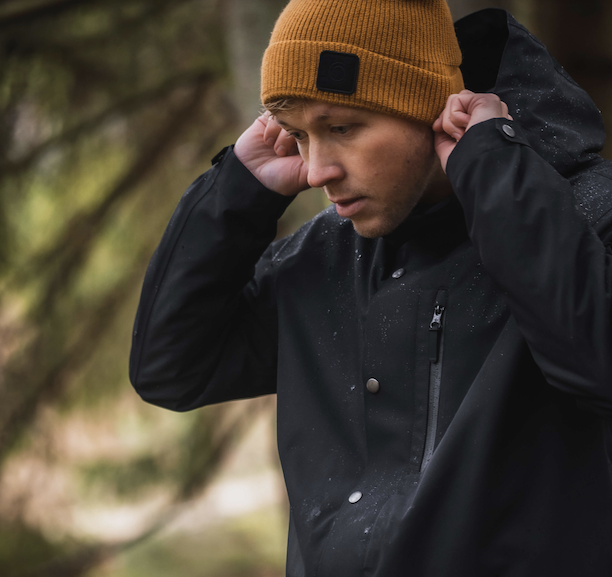
Bij Deense outdoor kledingmerk Superstainable maakt regenjassen uit duurzame, 100% gerecycled polyester, mét juiste certificaten. Zo is het merk GRS gecertificeerd. Dit certificaat verzekert dat het artikel is gemaakt volgens de beste duurzame recyclingoplossingen. De regenjassen hebben bovendien een tijdloos design en zijn van topkwaliteit, waardoor ze jarenlang meegaan! Scoor je Superstainable jas bij MOOSE in the CITY in Antwerpen!
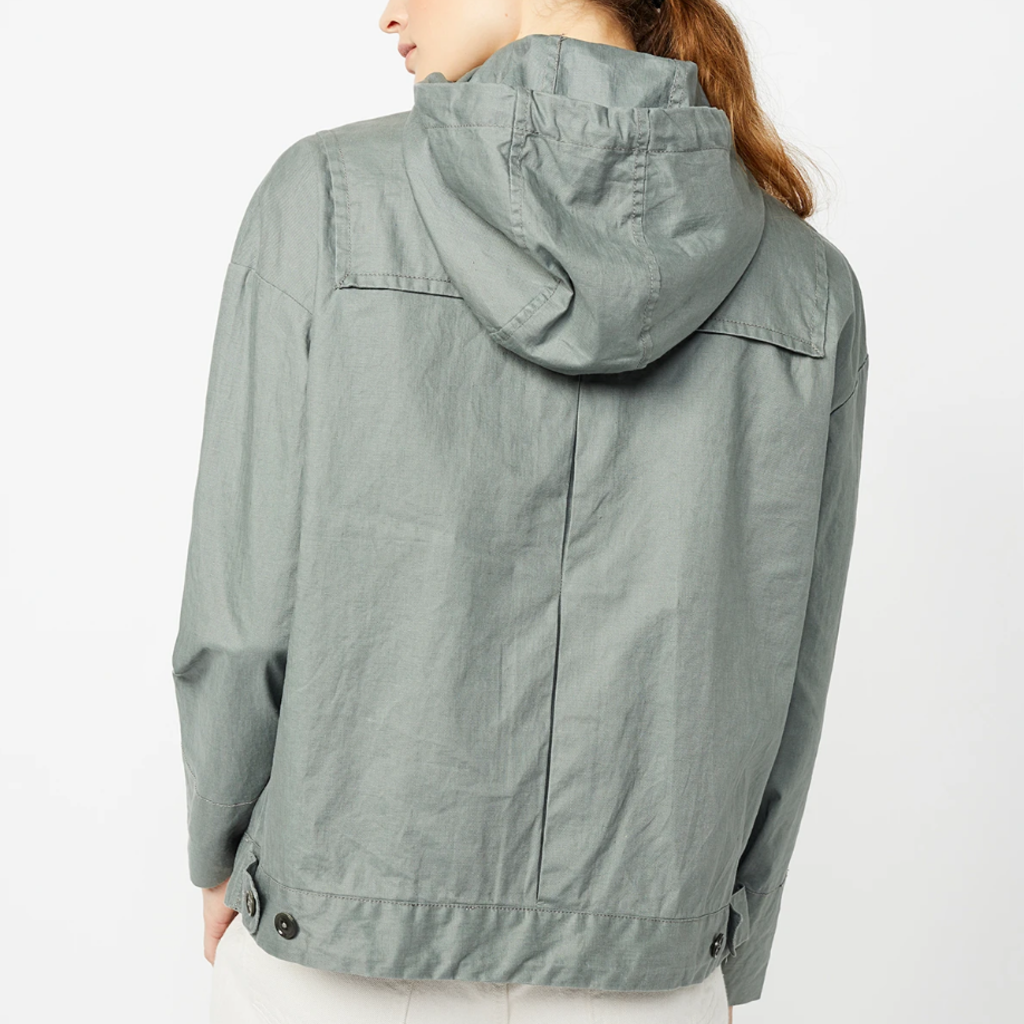
Ben je op zoek naar vegan rainwear? Dan kan je bij het duurzame merk Langerchen terecht. De regenbestendige jassen van het merk hebben het PETA label en bevatten soja was om de jassen waterafstotend te maken (als vegan alternatief voor bijenwas). Het merk let op de arbeidsomstandigheden in China en is GOTS gecertificeerd. Voor de jassen worden biologische en gerecycleerd materialen gebruikt. Ontdek Langerchen in Nederland bij Up To Do Good, BrandMission, thegreenlabels en Pek & Kleren.
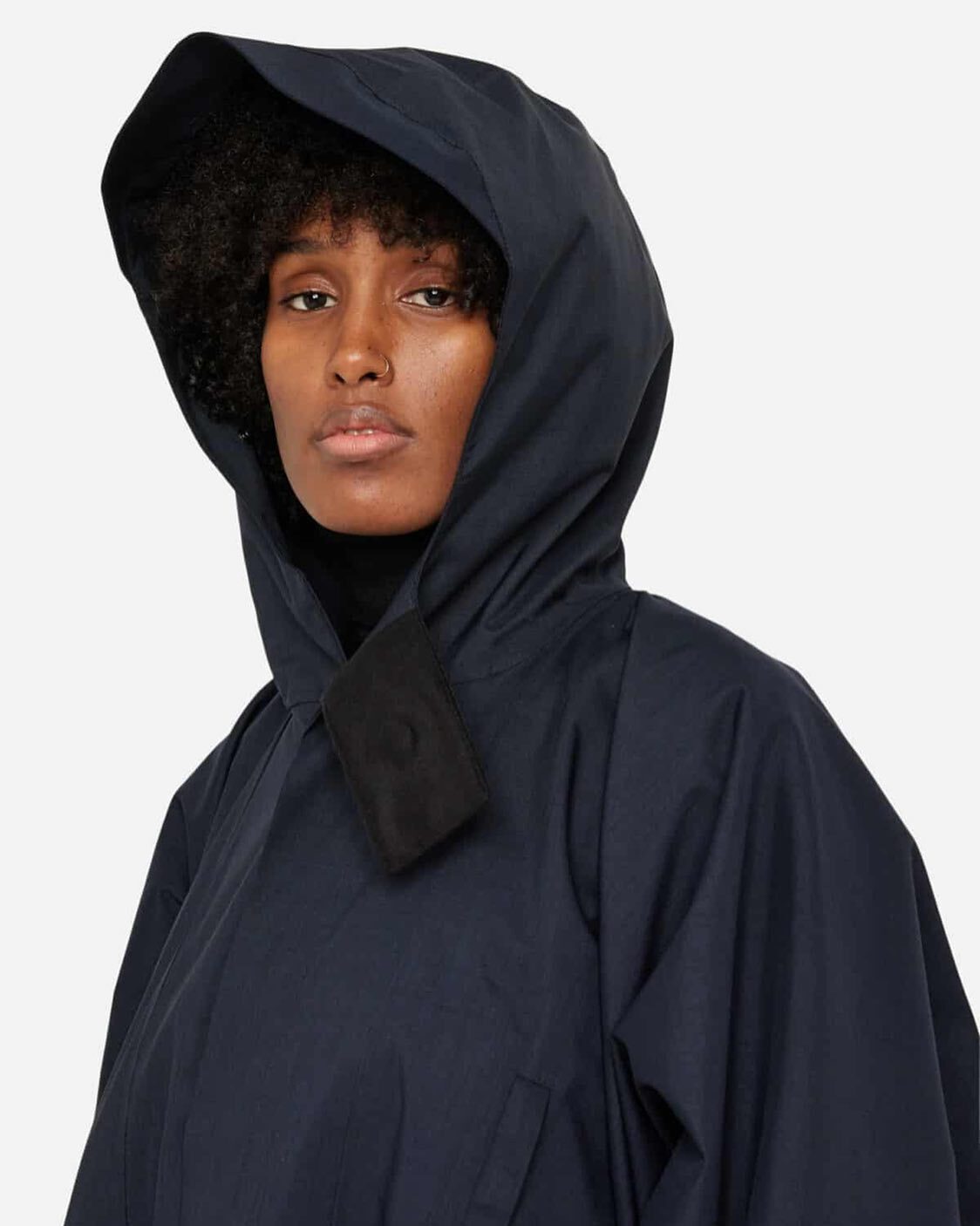
Het Noorse merk Norwegian Rain biedt stijlvolle, high-tech regenmantels. Het merk maakt functioneel outerwear met een chique uitstraling. Hun regenjassen voor mannen en vrouwen vrouwen is 100% waterproof en bestaan voor 70 – 100% van recycled polyester. Ontdek de luxueuze jassen van Norwegian rain bij l’Heroïne in Brugge.
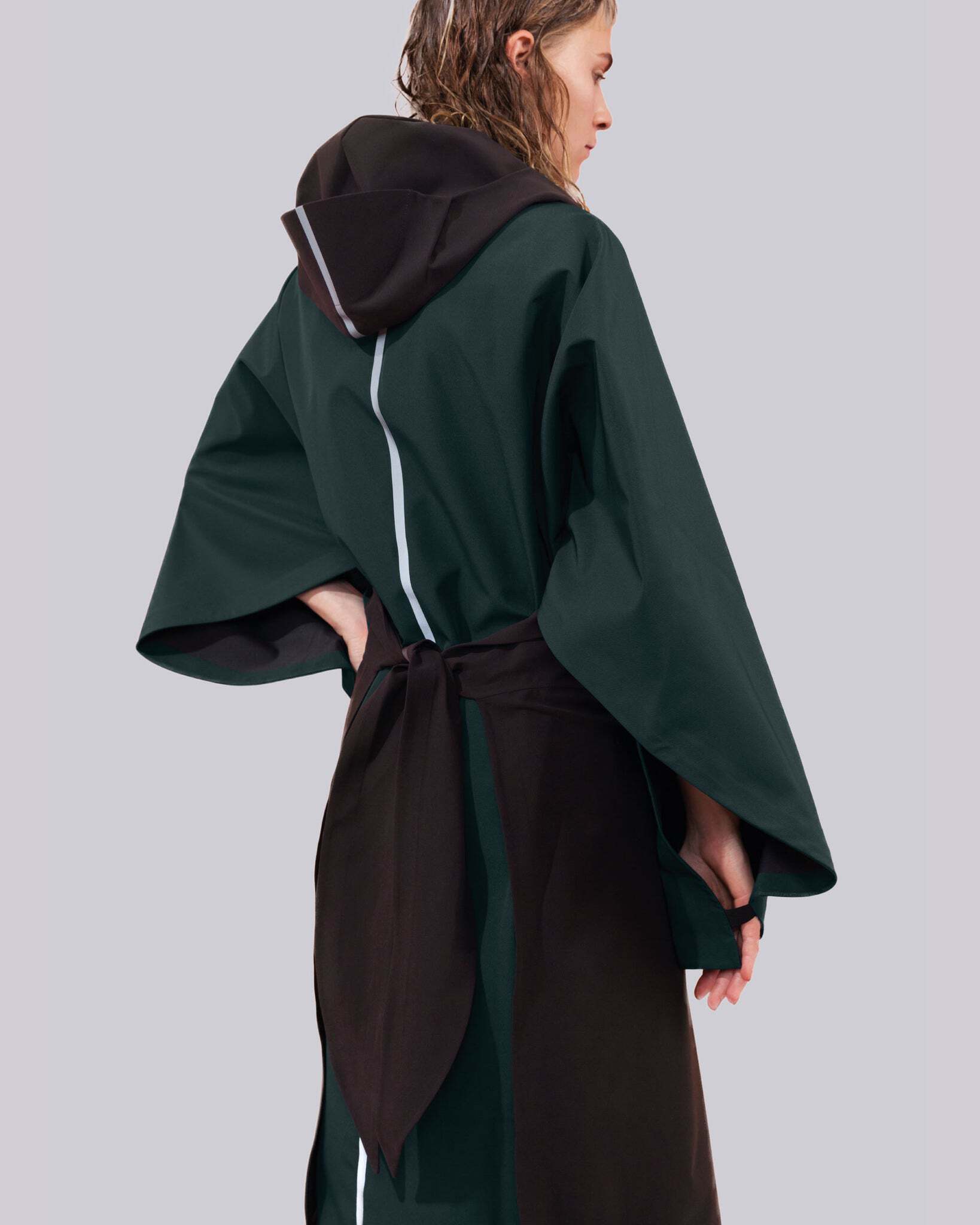
Het merk By Brown maakt exclusieve, vrouwelijke en getailleerde regenkleding voor vrouwen. In de collectie zitten ook enkele unisex modellen. Het zijn duurzaam verantwoorde regenjassen die lang meegaan. De jassen zijn gemaakt van hoogwaardig, verantwoord gecertificeerd, gerecycled polyester en koffiedik. Deze techniek zorgt ervoor dat ze ademend, comfortabel en natuurlijk regenbestendig zijn. Je kunt de prachtige jassen kopen bij de winkel van By Brown in Amsterdam of ze huren bij Lena Fashion Library of de locatie van Lena Fashion Library bij WhatTheF in Amsterdam-Zuid.
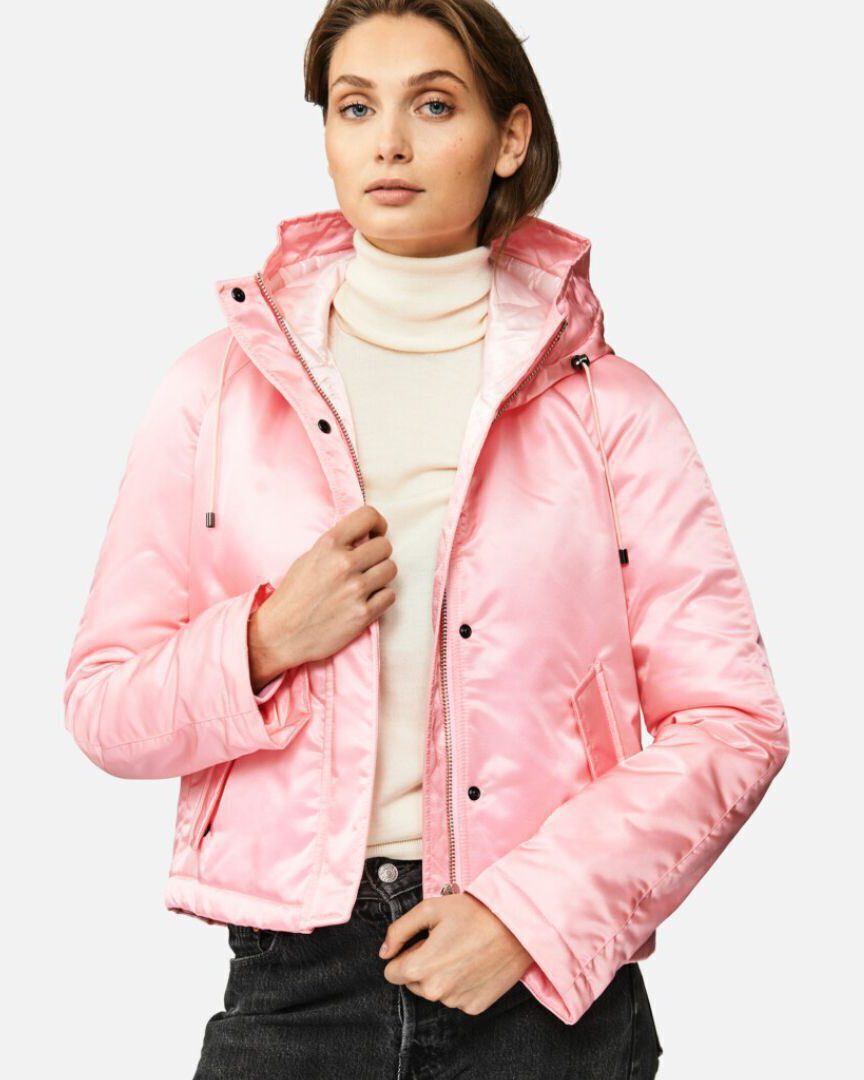
Teym is een merk dat hoogwaardige materialen, kwalitatieve productie methodes, eerlijke lonen en Europese productie hoog in het vaandel heeft staan. Het merk heeft mooie en functionele parka’s in de collectie. Ze worden gemaakt van materiaal dat lang meegaat.
Bij Rains vind je een super hippe regenjas. De Rains jassen zijn 100% veganistisch! Zo heeft het merk bijvoorbeeld alle dons en veren in hun wintercollectie vervangen door een lichtgewicht synthetisch isolatiemateriaal. De jassen worden van kwalitatieve materialen gemaakt zodat ze lang meegaan. Shop het merk bij Brooklyn, Tally-Ho, Sway.
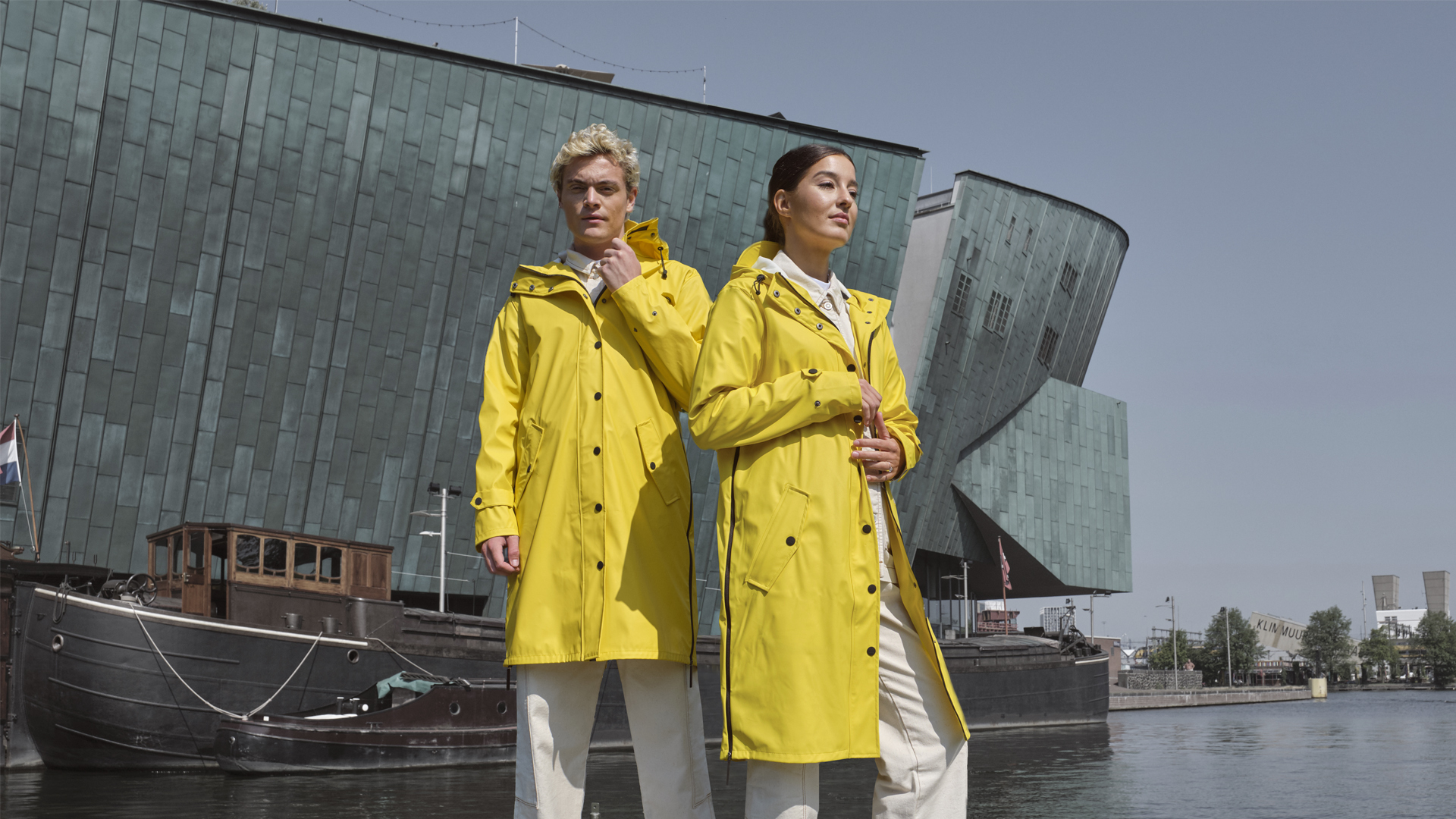
Ben jij een fietser? Dan zijn de jassen van Maium ideaal voor jou! De jassen hebben namelijk een slim design: je kan de de jas langs de zijkanten verbreden en over je stuur trekken. Zo blijven ook je benen droog tijdens een regenachtige fietstocht. De kwaliteitsvolle regenjassen zijn allemaal circulair geproduceerd zonder schadelijke chemicaliën. Het Amsterdams merk Maium maakt gebruikt van minstens 85% gerecyclede PET-flessen om ervoor te zorgen dat jij je droog en warm kan verplaatsen. Leuk weetje: de volledige collectie is ook vegan en dankzij het BSCI certificaat kan Maium goede arbeidsomstandigheden verzekeren in China.
De Maium jassen vind je bij MOOSE in the CITY in Antwerpen, HOST in Berchem, Harvest Club in Leuven en mAke in Hasselt. Ook in Nederland zijn ze te verkrijgen bij RECYCLE en Eerlijk Waar!, Up To Do Good, BrandMission, thegreenlables en Het Faire Oosten.
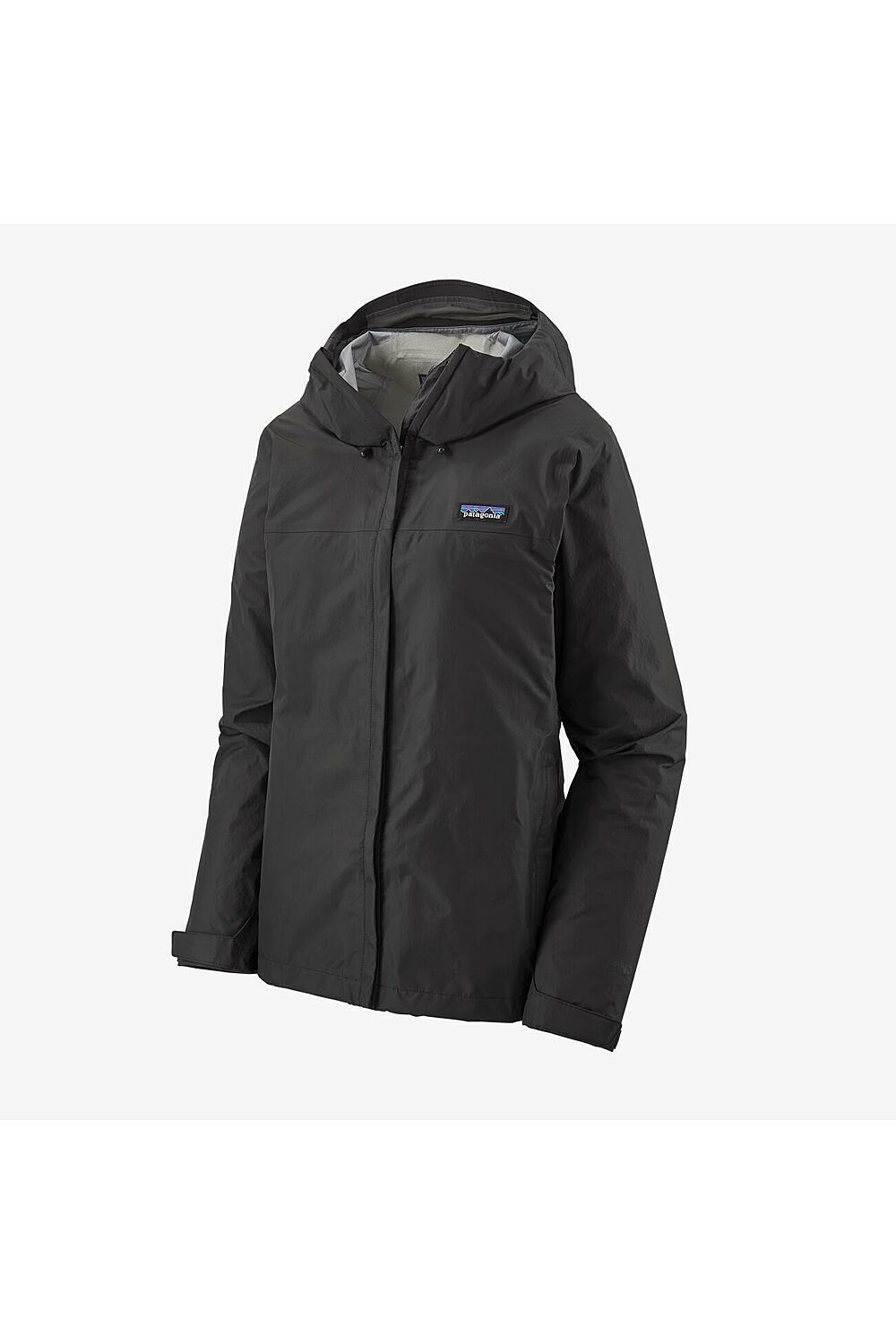
Voor Patagonia, mag het gerust milieuvriendelijk en tegelijk comfortabel zijn. Elk item in hun collectie is gemaakt voor veelzijdigheid, met een tijdloze, klassieke pasvorm. Het merk maakt gebruik van duurzaam verkregen, organische of gerecyclede materialen en wordt Fair Trade genaaid. Hun collectie van warm regenjassen is gemaakt voor de Noordelijke gebieden waar het nat en koud kan zijn. Het merk Patagonia houdt van regenjassen die échte essentials zijn. Ontdek Patagonia bij MOOSE in the CITY in Antwerpen.
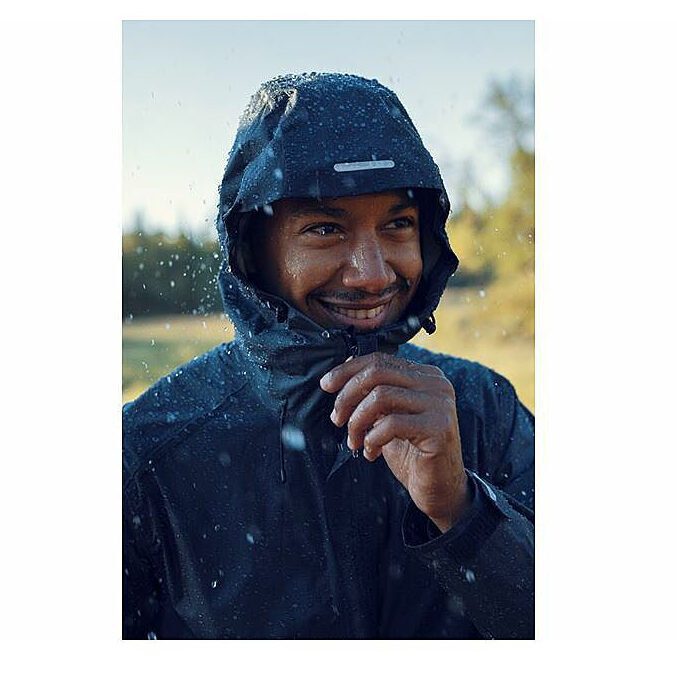
De jassen van Fjällräven zijn functioneel, duurzaamen hebben een tijdloos design. Of je ze nu gebruikt voor meerdaagse tochten, wandelingen in het bos of gewoon voor elke dag, je kunt erop vertrouwen dat de jassen van Fjällräven je warm en droog houden! Ontdek de jassen bij MOOSE in the CITY in Antwerpen.
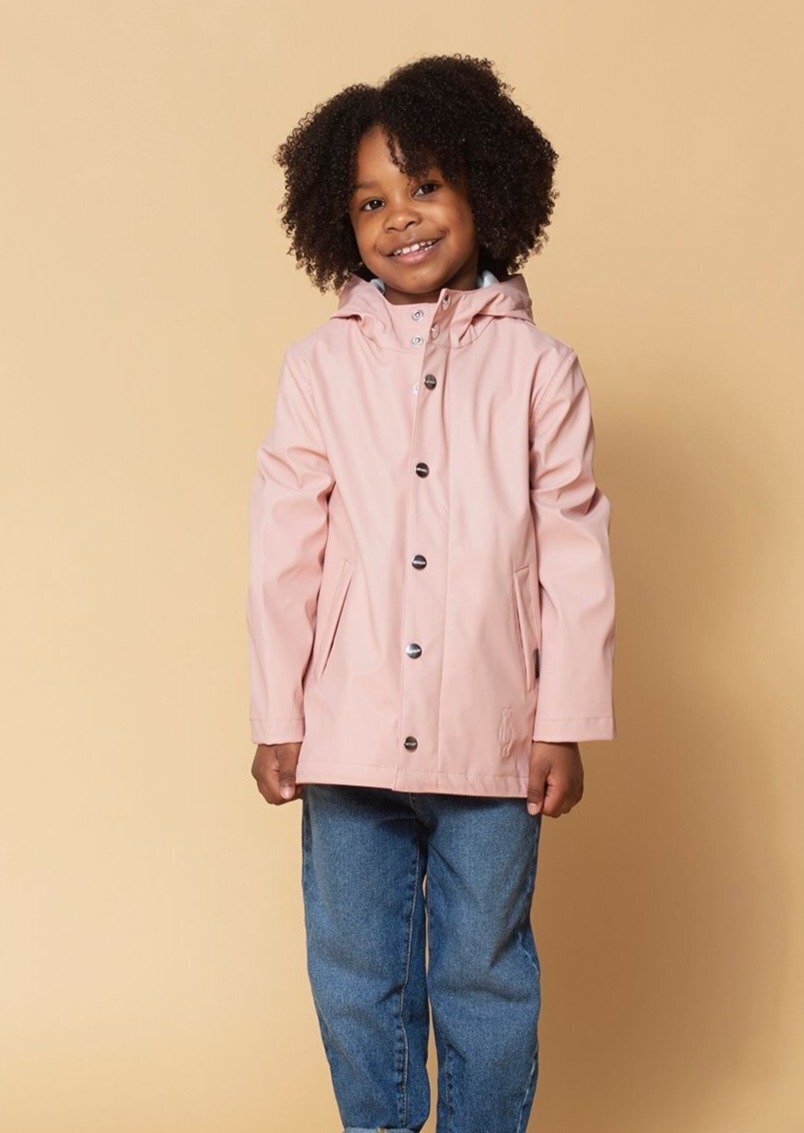
Het Amsterdamse merk Gosoaky beschermt sinds 2015 dé perfecte oplossing voor de gure regenbuien die door klimaatverandering steeds heviger worden. De regenmantels zijn waterproof en waterafstotend waardoor je kids zonder zorgen in de regen kunnen spelen! Alle jassen worden met de hand gemaakt in een kleine gecertificeerde fabriek in het noorden van Bejing, China. Bovendien steunt het merk projecten in Antarctica die penguins beschermen tegen klimaatopwarming, overbevissing en vervuiling. Shop Gosoaky bij Sessa en Harvest Club.
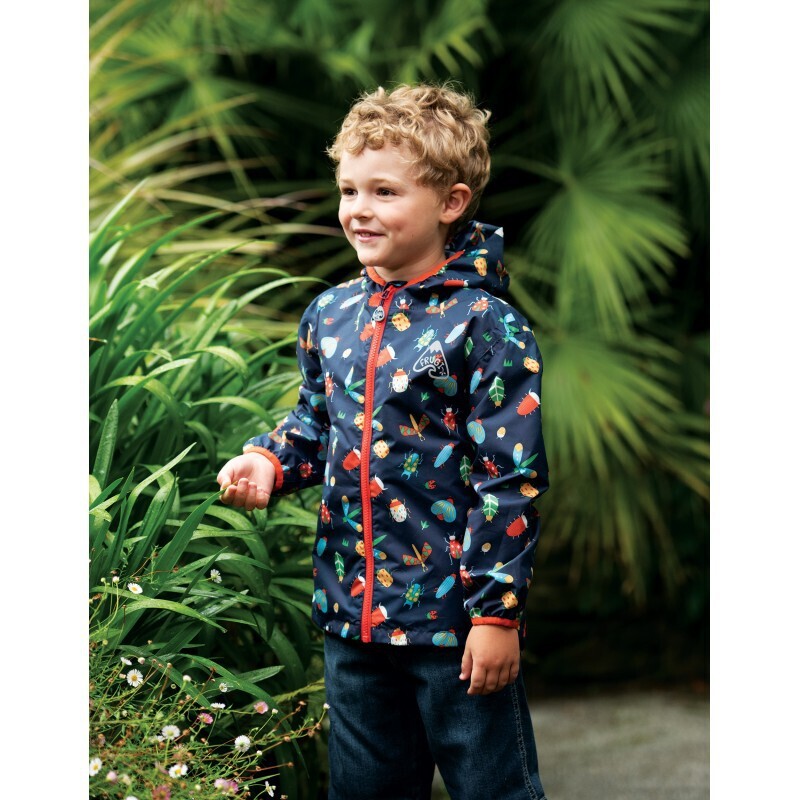
Wil jij je kids droog houden tijdens onverwachtse buien? Bij Doekjes en Broekjes in Leuven vind je opvouwbare, waterbestendige jassen voor jongens en meisjes van het merk Frugi. De jassen hebben toffe prints en geven jouw kids een hippe look!
De jassen worden geproduceerd in Turkije van 100% post-consumer gerecycled polyester. Ben jij op zoek naar speelse, comfortabele én duurzame kinderkleding? Neem dan zeker een kijkje bij Doekjes en Broekjes in Leuven.
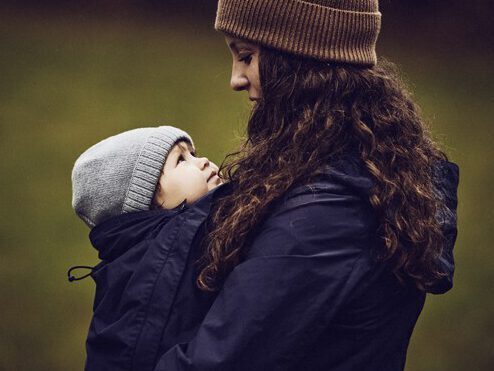
Wandel jij graag door de bossen met jouw baby? Dan is een buggy niet altijd even handig. Dankzij de Mamalila regenjassen, draag je je baby dicht bij jou op je buik of je rug waardoor samen wandelen kinderspel wordt. Het handige draagvak en de babycapuchon beschermen je kindje goed en zorgen voor het nodige comfort. De jassen kunnen ook zonder draagvak gedragen worden en zijn verstelbaar, waardoor de jas ook geschikt is voor tijdens de zwangerschap. Ontdek verschillende modellen en stijlen van jassen voor moeders bij Doekjes En Broekjes in Leuven en bij BlaBloom.
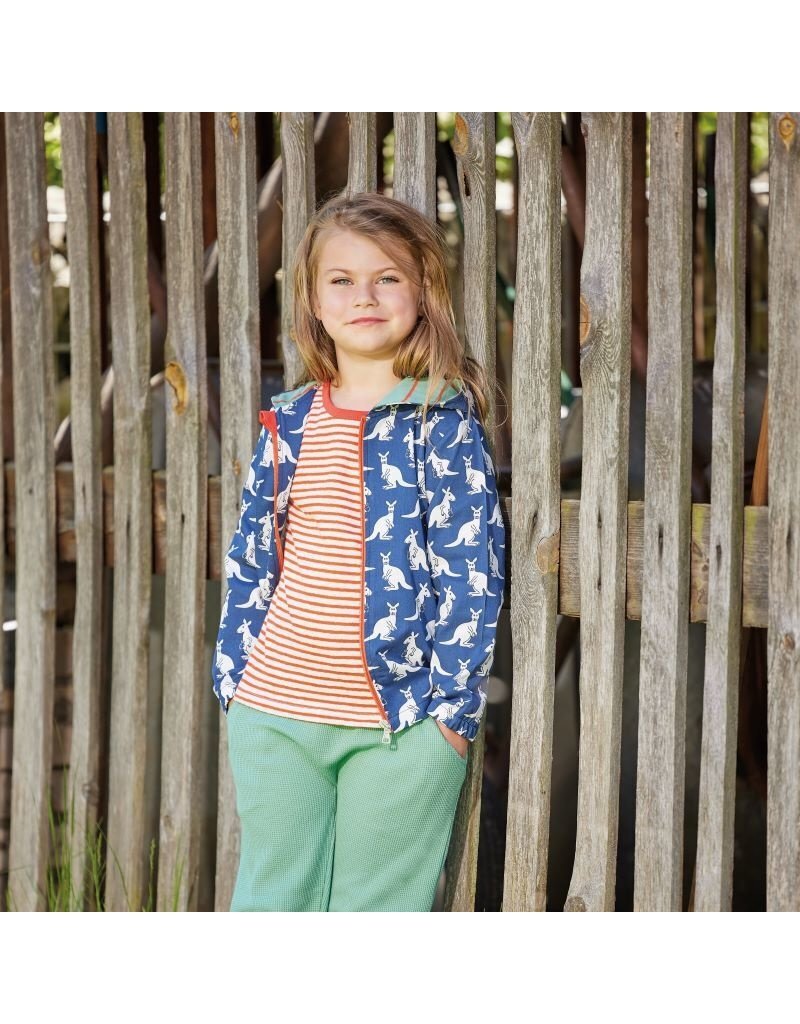
Zonnehoed in Zwalm is een ecologische geboorte- en gezinswinkel. Shop een leuke regenjas voor je kids in verschillende kleuren.
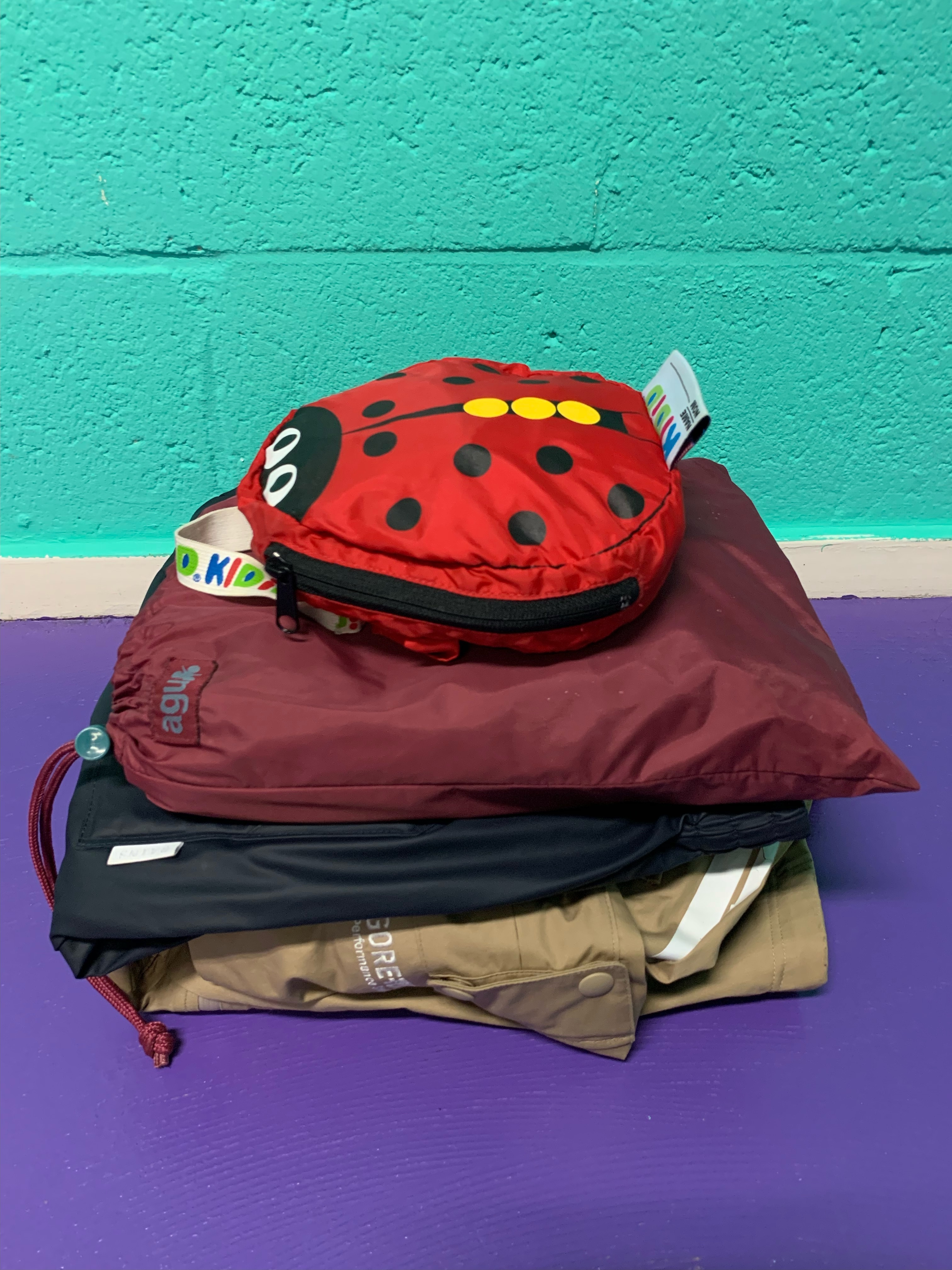
Bij De Woensdagwinkel in Amsterdam-Noord hebben ze een uitgebreide tweedehands collectie voor kids & volwassenen. Momenteel hebben ze enkel leuke regenjassen, die je op de foto kan zien. Het lieveheersbeestje voor kids is super leuk! Ze hebben momenteel ook grotere maten voor volwassenen van verschillende merken dus zeker de moeite om een kijkje in deze tweedehandswinkel te nemen.
Wil je meer meer duurzame mode ontdekken in jouw stijl en binnen jouw budget? Check dan zeker onze shoppinggids!
Lees ook:

23 april 2024

22 april 2024

18 april 2024